Check out my custom vibration dampener
10+ Best Women’s Tennis Racquets for 2024
Beginner & Intermediate
We hope you love this article. Just so you know, TennisCompanion may collect a small share of sales from the links on this page to help keep this site running. Learn more.
Women’s tennis is thriving, with a diverse group of talented players capturing the media’s attention, fiercely competing, and delivering incredibly entertaining and highly competitive matches.
Backed by legends like Serena and Venus Williams and younger players including Iga Swiatek, Aryna Sabalenka, Namoi Osaka, Coco Gauff, Emma Raducannu, and Elena Rybakina, the game continues its stellar growth with new players picking up the sport every day.
You can be a part of this world, too. If you’re getting started in tennis and wondering which racquet to buy, my guide to the best women’s tennis racquets will help you find the perfect fit. Intermediate or seasoned players will also benefit by exploring my up-to-date selection and information on the best options for ladies in 2024.
I’ve included a table below showcasing my picks for the best women’s tennis racquets to kick things off. However, I’ll dive deeper in the following sections to cover choosing which racquet is best for you, share why each racquet made this list, and provide additional information to help you get started on the right foot.
| Rank | Our Top Picks |
| 1 | Babolat Pure Drive |
| 2 | Head Speed MP |
| 3 | Babolat Pure Strike 100 |
| 4 | Wilson Clash 100 |
| 5 | Babolat Pure Aero |
| 6 | Yonex EZONE 98 |
| 7 | Wilson Blade 98 |
| 8 | Head Instinct MP |
| 9 | Yonex VCORE 100 |
| 10 | Tecnifibre TFight ISO 300 |
| 11 | Wilson Burn 100 |
| 12 | Dunlop FX 500 |
Article Contents
Click below to jump to a section
Tap below to jump to a section
Racquet Comparison Table
Does Your Racquet Matter?
4 Questions to Ask
Types of Tennis Racquets
Grip Size Considerations
Strings for Your Racquet
Women’s vs. Men’s Racquets
12 Best Racquets for Women
The Best Racquet for 2024
3 Racquets for Beginners
Tips for Choosing a Racquet
WTA Player Racquets
New to TennisCompanion?
Create a free account and explore my latest videos below
Racquet Comparision Table

I’ve included the table below to help you easily compare the racquets that made my list.
You can scroll left to right to view all of the attributes for comparison or click any of the links in the table to learn more about that specific frame.
| Racquet | Head Size | Length | Strung Weight | Balance | Swingweight | Stiffness | Beam Width |
| Babolat Pure Drive | 100 in² / 645.16 cm² | 27in / 68.58cm | 11.2oz / 318g | 4 pts HL | 320 | 71 | 23mm / 26mm / 23mm |
| Head Speed MP | 100 in² / 645.16 cm² | 27in / 68.58cm | 11.1oz / 315g | 4 pts HL | 330 | 60 | 23mm / 23mm / 23mm |
| Babolat Pure Strike 100 | 98 in² / 632.26 cm² | 27in / 68.58cm | 11.4oz / 323g | 4 pts HL | 330 | 64 | 21mm / 23mm / 21mm |
| Wilson Clash 100 | 100 in² / 645.16 cm² | 27in / 68.58cm | 11.0oz / 312g | 7 pts HL | 313 | 57 | 24.5mm / 24.5mm / 24.5mm |
| Babolat Pure Aero | 100 in² / 645.16 cm² | 27in / 68.58cm | 11.2oz / 318g | 4 pts HL | 322 | 65 | 23mm / 26mm / 23mm |
| Yonex EZONE 98 | 98 in² / 632.26 cm² | 27in / 68.58cm | 11.4oz / 323g | 6 pts HL | 318 | 65 | 23.5mm / 24.5mm / 19.5mm |
| Wilson Blade 98 | 98 in² / 632.26 cm² | 27in / 68.58cm | 11.4oz / 323g | 4 pts HL | 324 | 62 | 21mm / 21mm / 21mm |
| Head Instinct MP | 100 in² / 645.16 cm² | 27in / 68.58cm | 11.2oz / 318g | 4 pts HL | 313 | 64 | 23mm / 26mm / 23mm |
| Yonex VCORE 100 | 100 in² / 645.16 cm² | 27in / 68.58cm | 11.3oz / 320g | 4 pts HL | 322 | 65 | 25.3mm / 25.3mm / 22mm |
| Tecnifibre TFight ISO 300 | 98 in² / 632.26 cm² | 27in / 68.58cm | 11.2oz / 318g | 4 pts HL | 320 | 66 | 22.5mm / 22.5mm / 22.5mm |
| Wilson Burn 100 | 100 in² / 645.16 cm² | 27in / 68.58cm | 11.2oz / 318g | 4 pts HL | 320 | 72 | 23.5mm / 25mm / 23.5mm |
| Dunlop FX 500 | 100 in² / 645.16 cm² | 27in / 68.58cm | 11.3oz / 320g | 4 pts HL | 321 | 69 | 23mm / 26mm / 23mm |
If you’re looking for options specifically for beginners, be sure to check out the Babolat Boost Drive, Babolat Boost Aero, and the Wilson Ultra 108. Ready to find your perfect racquet? Let’s go!
Does Your Racquet Choice Matter?

Absolutely. A player’s racquet plays a crucial role in helping a player achieve their maximum potential.
However, there’s a caveat. If you’re a beginner, your racquet selection is less critical to your performance because most of your success and early progress will come through proper technique and the fundamentals.
Said another way, a specific tennis racquet won’t make you a better player by default, but the right tennis racquet can do wonders to enhance and maximize your game.
As you begin to evaluate racquets, it’s worth noting that manufacturers design every racquet with a specific purpose, level, or style of play in mind. For example, racquets are available to enhance various performance attributes, including power, control, topspin, or comfort.
If you’re a beginner, you can start with a more affordable racquet or jump right into a higher-priced performance frame, but you shouldn’t feel pressured to spend hundreds on your first racquet.
You don’t need to spend more than $40 on a racquet to get started. For many players, that’s an excellent approach to take.
If you find tennis isn’t the right sport for you, you’ll save yourself money. On the other hand, if you quickly discover you can’t get enough tennis, you can ditch your inexpensive racquet for a high-end model, and you’ll be excited and likely willing to spend the extra cash.
Regardless of your direction, there are specific attributes you should look for in your racquet if you’re new to the game. Next, I’ll cover those and some questions you should ask yourself before purchasing.
4 Questions to Ask Yourself

These four questions will help guide you as you choose a racquet.
What’s Your Budget?
If you’re on a tight budget and want to spend less than $50, head over to my guide for inexpensive tennis racquets to find a quality racquet and get started playing.
This article focuses on the best tennis racquets for women, ideal for beginner and intermediate players regardless of price. With that in mind, my recommendations feature racquets that cost $150 or more.
If you’re a beginner willing to spend a little extra but not quite ready for a high-end performance racquet, check out my article on the best tennis racquets for beginners for more options.
What is Your Long-Term Goal as a Tennis Player?
Knowing your long-term goals can be helpful to consider when choosing the right racquet. If you’re committed to the sport and looking to become proficient enough to compete or join a local women’s league, consider selecting a higher-quality racquet to grow into as your skills evolve.
On the other hand, if you’re looking to play casually with friends or infrequently, you may want to stick to a less expensive frame. Remember, you can always upgrade later if you catch the tennis bug.
What Type of Stroke Do You Have?
Beginners and elderly players tend to have compact strokes and swing the racquet slower. If you fit into either of these categories, you’ll want to look for a lighter racquet with a large head size that is easy to maneuver, offering more power and increasing your margin for error when swinging.
Here’s a table outlining roughly how racquet weight corresponds to a player’s experience level:
| Weight | Range | Power | Level |
| Lightweight | 8-9.5 ounces | High | Beginner |
| Midweight | 9.6 – 11.5 ounces | Medium | Beg. + Inter. |
| Heavy | 11.6 – 12.6 ounces | Low | Advanced |
Here’s another table showcasing various head sizes:
| Head Size | Measurement | Type of Racquet | Level |
| Oversized | 105+ in² | Power | Beginner |
| Mid-plus | 98 – 104 in² | Tweener | Beg. + Inter. |
| Mid | 85 – 97 in² | Control | Advanced |
Intermediate and advanced players often have full swings and faster strokes developed over time. At this stage, increasing your racquet’s weight and decreasing the head size will enable players to generate power derived from their sound technique combined with the racquet’s weight while also increasing control.
Which Style of Play Do You Have?
As your skills develop, your game will fall into one of three primary styles of play. If you’re an intermediate or advanced player already, then you likely know which category you fit into:
- Aggressive Baseliner: You like to hang out on the baseline and hit with a ton of topspin.
- Net Rusher: You enjoy moving to the net and hitting volleys to close out points.
- All Court: You’re comfortable and enjoy playing from all areas of the court.
Different types of racquets are more conducive to these styles of play, but it’s worth noting you can use any racquet for each. If you’re a beginner, there’s no need to consider your style. It will develop over time with the help of an instructor.
Although you may have a style of play that you’d like to emulate, you can use any racquet to achieve your goals – the racquet doesn’t dictate your style. Instead, a racquet will only enhance a player’s ability to execute.
Types of Tennis Racquets
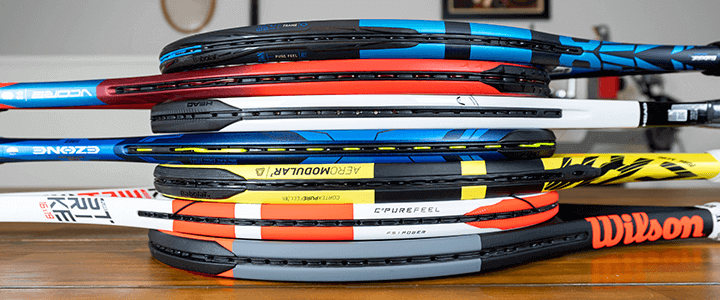
Let’s quickly review the three types of tennis racquets: power, control, and tweener.
When searching for a new racquet, you can quickly narrow down your options if you’re familiar with them.
Power racquets
As the name suggests, these racquets emphasize power when hitting and tend to have the following ideal attributes for beginners.
- Large Head Size: The racquet’s head is where the strings create the racquet face. A larger head size affords you more margin for error while also increasing power potential.
- Stiff Frame: Frame stiffness ratings typically range between 55 and 75, with lower numbers indicating a more flexible racquet and higher numbers representing a stiffer racquet. A stiff frame gives you extra power because it is rigid and deflects more energy when connecting with the ball. However, a downside to more rigid frames is that they can transfer more shock and vibration to a player’s arm, which may cause discomfort for some players over time.
- Open String Pattern: An open or less dense string pattern with more space between the strings allows the ball to sink deeper into the string bed and return more energy to the ball when it makes contact. It also helps with generating topspin.
- Lightweight: Power racquets will often be lighter and easier to maneuver than control racquets, with weights typically falling between 8 and 10.5 ounces.
Control racquets
Offering maximum control, manufacturers design these racquets for experienced intermediate to advanced players.
- Smaller Head Size: A smaller head size reduces the trampoline effect and gives players more control.
- Flexible Frame: Usually rated at roughly 65 or below, a flexible frame will absorb energy during a swing and increase control while being easier on a player’s arm.
- Closed String Pattern: Closed string patterns with less space between the strings result in a firm stringbed and further reduce the trampoline effect, giving you more control and reducing spin potential.
- Heavier Weight: All things being equal, a heavier racquet will increase its power, but the player needs the strength and skill to maneuver it. Since control racquets usually have smaller heads, which reduces power, they compensate with heavier weight. Control racquets will typically weigh in at 10.5 ounces or higher.
Helpful Tip
When it comes to weight, every player needs to experiment to find out what works for them, and the best way to do that is by experimenting with a few racquets at differing weights. Players shouldn’t have issues swinging their racquet comfortably for 30-60 minutes without feeling too heavy or hurting their wrist or arm.
Tweener racquets
As the name suggests, tweener racquets are the middle ground be- “tween” power and control racquets. They feature:
- Mid-sized head
- Mid-range flexibility
- Typically, an open string pattern
- Mid-range weight, generally around 10-11 ounces
Tweener racquets are ideal for players who want both power and control – but not too much emphasis on either. These racquets cater to a broad spectrum of players. From beginners to intermediate and advanced, there’s something for everyone.
Grip Size Considerations
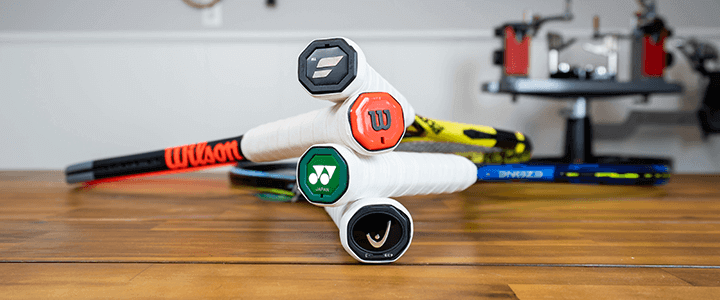
Another attribute to consider before buying a tennis racquet is the ideal grip size, which measures the handle’s circumference. Most adult tennis racquets come in varying grip sizes, so once you find a racquet you like, be sure to measure for the appropriate size.
The right size grip will help ensure playing tennis is comfortable and avoid injury. However, your grip size is a personal preference, so it’s okay to go smaller or larger, especially if it feels right.
Here’s a quick snapshot of available grip sizes for most racquets:
Check out my grip size guide to find the perfect fit.
Strings for Your Racquet
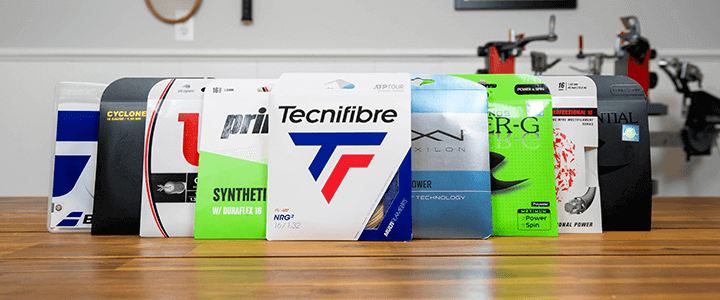
There are two overarching categories of string for tennis racquets:
- Natural gut
- Synthetic
It may come as a surprise, but string manufacturers make natural gut tennis strings from cow intestine, which is a highly resilient material in use since 1875. Their biggest drawback is that they are expensive. As a result, advanced players with a fine-tuned sense of their string’s performance are more inclined to use them.
However, with that said, they can be an excellent option for players of all levels who are willing to spend the money and don’t have any issue with the raw materials in use – especially if comfort is a top priority.
Synthetic strings are the most popular these days, offering something for everyone. There are three groupings or categories of synthetic strings available to tennis players:
For more information about these, check out my comprehensive guide to racquet strings, which includes an in-depth review of each string type and some of my favorite picks within each string category.
Another decision you’ll have to make when purchasing tennis strings is the gauge or thickness you’d like to use. Thinner strings offer a better feel and spin, while thicker strings enhance durability.
Helpful Tip
Many inexpensive beginner tennis racquets come prestrung. If you’re purchasing online, check if it’s prestrung before springing for a set of strings.
What’s the Difference Between Women’s and Men’s Tennis Racquets?
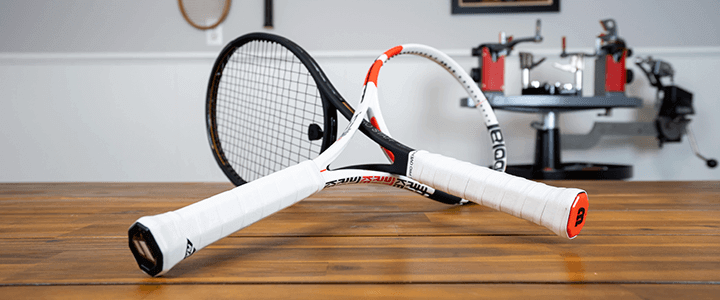
If you’re new to tennis, you may wonder what the difference is between men’s and women’s tennis racquets.
The truth is that virtually all racquets are unisex. However, women and men may prefer different characteristics in a racquet.
For example, many women will opt for a lighter frame and smaller grip size, but that’s not always the case. As a result, it’s common for men and women to use the same racquet.
There is one notable exception. Tecnifibre makes a tennis racquet called the T-Rebound, which Tecnifibre explicitly designed for women. We’ll look at this racquet as one of my top picks.
The 12 Best Tennis Racquets for Women
Below are my top picks for women’s tennis racquets for 2024.
What’s the Best Women’s Tennis Racquet?
My pick for the best women’s tennis racquet is the Babolat Pure Drive, which is well-suited for many players.
Babolat Pure Drive
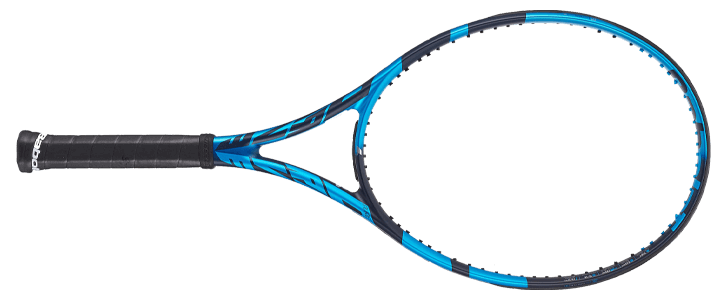
Like all tennis racquets, the Babolat Pure Drive is unisex, with players on the men’s and women’s pro tours using it.
The racquet weighs a little over 11 ounces, which most women will find perfectly manageable. One of my favorite parts about the racquet is that it’s ideal for a wide range of players and styles, including aggressive baseliners who like to swing big and dictate the point.
It will deliver plenty of power and spin on groundstrokes, two of the racquet’s strongest attributes, but it’s also well-rounded.
While shopping, you may come across the Babolat Pure Drive Plus, the extended-length version of the racquet used by retired tennis player Dominika Cibulkova.
If the 11.2-ounce weight is intimidating, check out the Babolat Pure Drive Team or Lite, which weigh 10.6 and 10.1 ounces, respectively.
Key Specs
| Head Size | 100 in² / 645.16 cm² |
| Strung Weight | 11.2oz / 317.51g |
| String Pattern | 16 Main / 19 Cross |
| Power | Low-Medium |
| Pre-strung | No |
| Players Endorsing | Garbine Muguruza Karolina Pliskova Julia Goerges Amanda Anisimova Sofia Kenin |
Head Speed MP
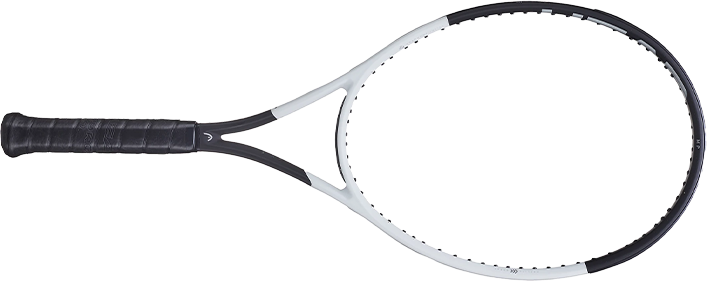
While less powerful than the first tennis racquet on the list, this fast-swinging frame delivers balance across nearly all attributes, helping players perform well from all around the court.
It’s the same weight as the Babolat Pure Drive 2021, but one area where it differs substantially is its stiffness, rated at 60 compared to the Pure Drive’s 71. The result is less power, added feel, and extra comfort.
You’ll notice that the racquet’s name features the letters MP, which stands for mid plus, referencing the racquet’s 100 square inch head.
Keep in mind that the Head Speed Team is another option worth considering at only 10.5 ounces if you’re looking for a lighter-weight option.
Key Specs
| Head Size | 100 in² / 645.16 cm² |
| Strung Weight | 11.1oz / 315g |
| String Pattern | 16 Main / 19 Cross |
| Power | Low-Medium |
| Pre-strung | No |
| Players Endorsing | Bianca Andreescu Cori (Coco) Gauff Elise Mertens Samantha Stosur Monica Puig Karolina Muchova Sloane Stephens |
Babolat Pure Strike 100
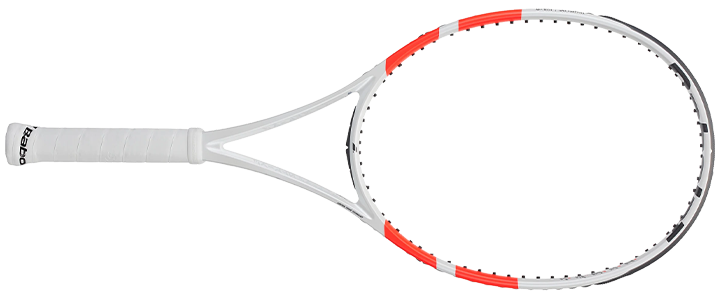
The Babolat Pure Strike is another all-around great racquet for singles and doubles. It’s roughly the same weight as the first two models on this list and plenty maneuverable while delivering excellent topspin from the baseline.
One thing that makes the Babolat Pure Strike unique is its well-rounded performance. It does everything well, from hitting groundstrokes to volleys, serves, and returns.
Alternatively, drop down to the lighter Babolat Pure Strike Team, which weighs 10.7 ounces. Both racquets are excellent options with the same great technologies.
Key Specs
| Head Size | 100 in² / 645.16 cm² |
| Strung Weight | 11.2oz / 318g |
| String Pattern | 16 Main / 19 Cross |
| Power | Low-Medium |
| Pre-strung | No |
| Players Endorsing | Anett Kontaveit Bethanie Mattek-Sands |
Wilson Clash 100

Endorsed by former WTA player Nicole Gibbs, the Clash is one of Wilson’s newest offerings, a popular option since its release.
It has an ideal and manageable weight of 11 ounces and will deliver exceptional performance from all areas of the court.
What sets this racquet apart is that it’s well-suited for players who demand comfort, resulting from the frame’s remarkably low stiffness rating of only 57. However, the racquet reaches a higher comfort level while retaining plenty of power, spin, and feel.
Lighter weight options include the Wilson Clash 100L and Wilson Clash 100 UL, which weigh 10.4 and 9.9 ounces, respectively.
Plus, players also have the option to try the Wilson Clash 108, which features an oversized head for extra power and spin, a higher margin for error, and a weight of 10.4 ounces.
Key Specs
| Head Size | 100 in² / 645.16 cm² |
| Strung Weight | 11oz / 312g |
| String Pattern | 16 Main / 19 Cross |
| Power | Low-Medium |
| Pre-strung | No |
| Players Endorsing | Nicole Gibbs |
Babolat Pure Aero

If you love playing aggressive tennis from the baseline, you’ll likely enjoy the Babolat Pure Aero. It delivers a combination of spin and power, making it a popular choice for many players.
Its weight is right in the same range as the other racquets on the list, but there are two additional options with the Babolat Pure Aero Team and Lite, which weigh 10.6 and 10 ounces, respectively. Beyond that, the racquet remains unchanged and delivers the same excellent performance.
Caroline Wozniacki’s racquet of choice is the Babolat Pure Aero Plus, an extended version that’s a half-inch longer than the standard 27 inches. The added length will give you even more power and spin.
Key Specs
| Head Size | 100 in² / 645.16 cm² |
| Strung Weight | 11.2oz / 318g |
| String Pattern | 16 Main / 19 Cross |
| Power | Low-Medium |
| Pre-strung | No |
| Players Endorsing | Caroline Wozniacki Leylah Fernandez Johanna Konta Catherine (Cici) Bellis Jennifer Brady Danielle Collins |
Yonex EZONE 98

For extra control and precision, check out the Yonex EZONE 98, which has a smaller 98 square-inch head size and is the racquet of choice for Naomi Osaka, Jessica Pegula, Anastasija Sevastova, Marketa Vondrousova, and Belinda Bencic.
The racquet weighs 11.4 ounces, feels great, and performs well in all areas of the court, so it’s well worth considering.
Players researching this racquet have many options to consider, which is a huge plus. Here are a few to check out:
- Yonex EZONE 98: 98 in² / 11.4 oz
- Yonex EZONE 98+: 98 in² / 11.4 oz
- Yonex EZONE 98L: 98 in² / 10.6 oz
- Yonex EZONE Game: 98 in² / 10 oz
- Yonex EZONE 100: 100 in² / 11.2 oz
- Yonex EZONE 100L: 100 in² / 10.5 oz
- Yonex EZONE 100SL: 100 in² / 10 oz
- Yonex EZONE 105: 105 in² / 10.2 oz
- Yonex EZONE 108: 108 in² / 9.6 oz
- Yonex EZONE Ace: 102 in² / 9.7 oz
- Yonex EZONE Feel: 102 in² / 9.3 oz
It’s one of the most in-depth racquet lines on the market, which gives players of all ages and levels an excellent selection. There’s also a limited edition version that Naomi Osaka uses.
Key Specs
| Head Size | 98 in² / 632.26 cm² |
| Strung Weight | 11.4oz / 323.18g |
| String Pattern | 16 Main / 19 Cross |
| Power | Low-Medium |
| Pre-strung | No |
| Players Endorsing | Naomi Osaka Anastasija Sevstova Marketa Vondrousova Belinda Bencic Sorana Cirstea Linda Noskova |
Wilson Blade 98
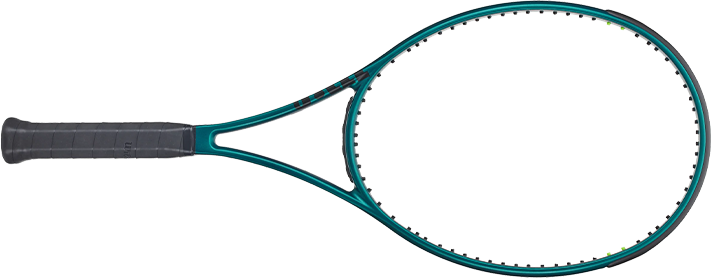
With its emphasis on control and precision, it’s no surprise that the Wilson Blade 98 is one of the most popular racquets on the WTA tour, helping players perform their best.
The Wilson Blade has a 98 square-inch head and an open 16×19 string pattern, delivering moderate power and plenty of grip for generating the topspin that experienced players crave.
The racquet’s 11.4-ounce weight can make it challenging for some to swing, but luckily, there are a few other options in the Blade lineup to consider.
I’d encourage players considering this racquet to check out the Wilson Blade 100L. It has a slightly larger head size and is lighter at 10.6 ounces and is another terrific option.
Key Specs
| Head Size | 98 in² / 632.26 cm² |
| Strung Weight | 11.4oz / 323g |
| String Pattern | 16 Main / 19 Cross |
| Power | Low-Medium |
| Pre-strung | No |
| Players Endorsing | Emma Raducanu Paula Badosa Amanda Anisimova Beatriz Haddad Maia Marta Kostyuk Jelena Ostapenko Anastasia Pavlyuchenkova |
Head Instinct MP
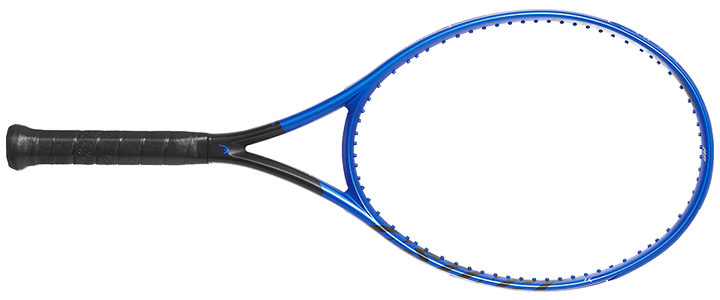
With its relatively arm-friendly stiffness rating and manageable weight, this racquet is fantastic for intermediate to advanced players who like to swing big and dictate points. Although she’s now retired, it’s the racquet of choice for Maria Sharapova.
If you want to drop down to a lighter weight, check out the Head Instinct Team L, which weighs only 10 ounces.
The Head Instinct PWR is another lighter option with a larger 115 square-inch head size and an extended 27.7-inch length. The combination will offer extra power, spin, and margin for error.
Key Specs
| Head Size | 100 in² / 645.16 cm² |
| Strung Weight | 11.2oz / 318g |
| String Pattern | 16 Main / 19 Cross |
| Power | Low-Medium |
| Pre-strung | No |
| Players Endorsing | Maria Sharapova |
Yonex VCORE 100
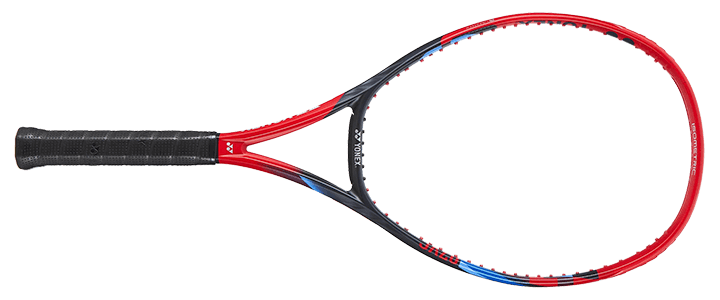
For an easy-to-swing racquet that emphasizes topspin, try this frame. It’s a perfect fit for intermediate or advanced players.
The racquet has a mid-range weight of 11.3 ounces and a user-friendly head size of 100 square inches for players who love to hang out on the baseline and trade groundstrokes.
Like the EZONE series of racquets, there are a few additional models to consider – here’s what they have to offer:
- Yonex VCORE 98: 98 in² / 11.4 oz
- Yonex VCORE 100L: 100 in² / 10.5 oz
This racquet is popular with WTA players, including Caroline Garcia, Elena Rybakina, and Donna Vekic.
Key Specs
| Head Size | 100 in² / 645.16 cm² |
| Strung Weight | 11.3oz / 320g |
| String Pattern | 16 Main / 19 Cross |
| Power | Low-Medium |
| Pre-strung | No |
| Players Endorsing | Elena Rybakina Caroline Garcia Donna Vekic Eugenie Bouchard |
Tecnifibre TFight ISO 300
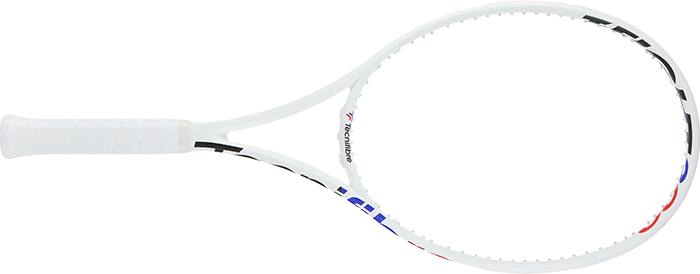
Built for experienced players, the TFight ISO 300 is the racquet of choice for Iga Swiatek, one of the most dominant female tennis players in recent history.
At 11.2 ounces strung, it’s nimble and easy to maneuver while offering a fantastic blend of controllable power and spin.
Unique to this racquet, Tecnifibre integrates Isoflex, which adjusts the frame’s stiffness throughout for enhanced stability and better overall response compared to the last generation.
The racquet also uses Tecnifibre’s RS Section five-sided frame design to enhance the racquet’s stability and performance further.
Key Specs
| Head Size | 98 in² / 632.26 cm² |
| Strung Weight | 11.2oz / 318g |
| String Pattern | 16 Main / 19 Cross |
| Power | Low-Medium |
| Pre-strung | No |
| Players Endorsing | Iga Swiatek |
Wilson Burn 100
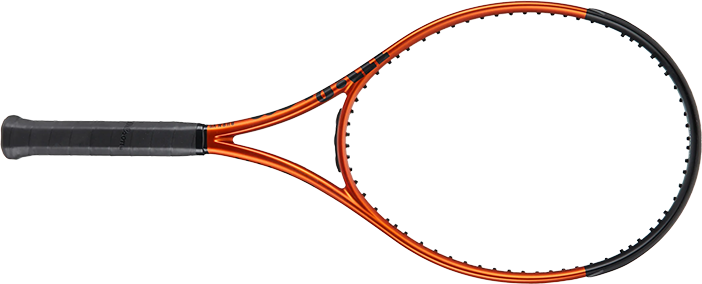
Another offering from Wilson, the Burn 100 v5, is the latest update to an excellent frame for players looking for power and spin.
The racquet weighs 11.2 ounces and delivers a well-rounded performance like others on the list.
There are also a handful of additional options at a player’s disposal, all of which have the same 100-square-inch head size.
They include the Wilson Burn 100S, 100LS, and 100ULS. Each of these offers a more open string pattern that’s 18×16 to make it easier to generate topspin.
The 100S, 100LS, and 100ULS weigh 10.3, 10.5, and 9.7 ounces, and each is worth considering for your next racquet.
Key Specs
| Head Size | 100 in² / 645.16 cm² |
| Strung Weight | 11.2oz / 318g |
| String Pattern | 16 Main / 19 Cross |
| Power | Low-Medium |
| Pre-strung | No |
Dunlop FX 500
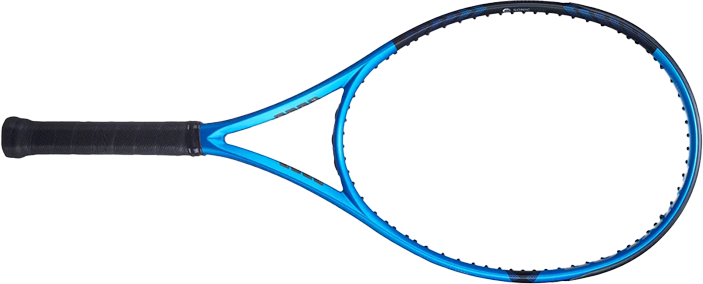
The only frame from Dunlop to make this list, the FX 500, fits right in with the rest of the racquets. It has an 11.3-ounce weight and 100 square inch head size, giving plenty of margin for error.
Highlights for this racquet include power, spin, and maneuverability, which help it deliver an excellent performance regardless of the shot you’re hitting. If the weight is intimidating, you have two additional options: the Dunlop FX 500 LS and FX 500 Lite.
The 500 LS is lighter at 10.6 ounces, while the FX 500 Lite is the easiest-to-swing option weighing in at 10 ounces.
Key Specs
| Head Size | 100 in² / 645.16 cm² |
| Strung Weight | 11.3oz / 318g |
| String Pattern | 16 Main / 19 Cross |
| Power | Low-Medium |
| Pre-strung | No |
3 Racquets for Beginners
The following racquets are great picks for lighter-weight options with larger head sizes if you’re new to the game.
Babolat Boost Drive
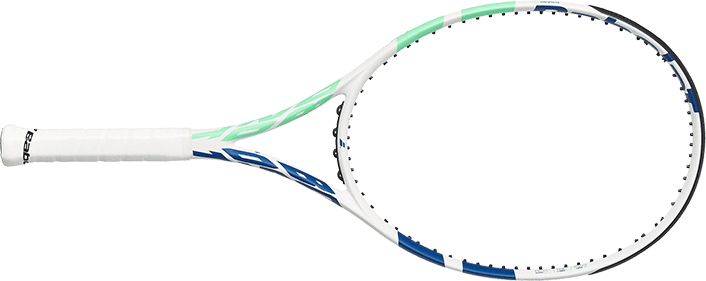
For a racquet with a forgiving 105-square-inch head size, look no further than the Babolat Boost Drive — the ultimate beginner’s racquet for women. It’s lightweight, easy to swing, and an ideal entry-level frame.
Plus, it comes prestrung, which is one less thing to consider.
Key Specs
| Head Size | 105 in² / 677.42 cm² |
| Strung Weight | 9.6oz / 278g |
| String Pattern | 16 Main / 19 Cross |
| Power | Medium |
| Prestrung | Yes |
| Players Endorsing | n/a |
Babolat Boost Aero

Beginners or kids transitioning into adult racquets will enjoy playing with the Babolat Boost Aero: it’s light and easy to learn to use. Its head size is smaller than the Boost Drive, and it’s a few grams heavier but still an overall user-friendly option to check out.
Like the Babolat Boost Drive, it comes prestrung.
Key Specs
| Head Size | 102 in² / 658.06 cm² |
| Strung Weight | 9.8oz / 278g |
| String Pattern | 16 Main / 19 Cross |
| Power | Low-Medium |
| Prestrung | Yes |
| Players Endorsing | n/a |
Wilson Ultra 108

This racquet is perfect for beginners with its generous 108 square inch head size and lighter weight. It’s also an excellent option for committed doubles players looking for a quality frame at the net.
Key Specs
| Head Size | 110 in² / 709.68 cm² |
| Strung Weight | 10oz / 283g |
| String Pattern | 16 Main / 18 Cross |
| Power | High |
| Pre-strung | No |
| Players Endorsing | n/a |
Tips for Choosing the Best Racquet
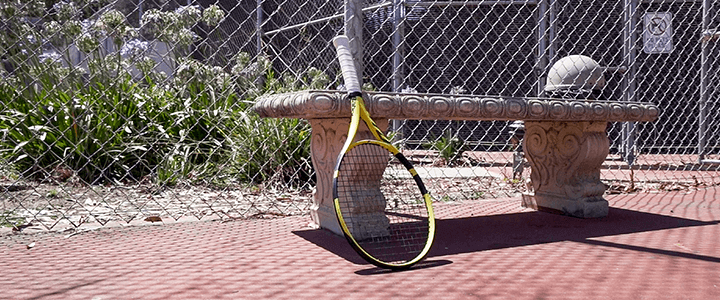
No doubt, finding the right tennis racquet takes a bit of time and energy, but the payoff is well worth the effort. Here are a few extra tips to consider when tracking down a new racquet.
Demo Racquets, If Possible
If possible, head to your local tennis shop or club and see if they offer demo racquets for you to test. Nothing beats holding a racquet and playing with it for a while.
If they don’t offer any racquets I’ve recommended as demos, check with popular online retailers who often offer programs.
Borrow a Friend’s Racquet
Unfortunately, demo programs aren’t always accessible. If that’s the case and you have a friend who plays tennis, ask them if you can borrow their racquet. Once you’ve hit with it, you can look up the specs online to see how that racquet compares to others on the list, keeping your experience using their racquet in mind.
Don’t Overthink It
If you’re new to the game, don’t overthink it. You can start with a less expensive racquet, and if you enjoy the game, you can always move up to another racquet later as your skills develop.
The worst thing that can happen is that you end up with analysis paralysis and don’t buy anything or get started in the first place.
Watch the Pros
While it won’t help you get a feel for the racquet, you can also watch videos of the pros using the racquet you’re considering – for example, Serena with her Wilson Blade SW102 Autograph.
Note their style of play and how the racquet works for them, but keep in mind that most professional tennis players have further customizations of the racquets sold by retailers to maximize their performance.
WTA Player Racquets

Although I encourage players to refrain from buying the racquet their favorite player is using without consideration for their own needs, it’s helpful to learn about the different racquets available for consideration.
To that end, here’s a list of the professional tennis players I’m asked most frequently about regarding their racquets.
| Player | Brand | Racquet |
| Ajla Tomljanovic | Wilson | Ultra 100 |
| Anett Kontaveit | Babolat | Pure Strike 100 |
| Angelique Kerber | Yonex | VCORE 100 |
| Aryna Sabalenka | Wilson | Blade 98 18×10 |
| Ashleigh Barty | Head | Gravity MP |
| Belina Bencic | Yonex | EZONE 100 |
| Bianca Andreescu | Head | Graphene MP |
| Caroline Garcia | Yonex | VCORE 100 |
| Coco Gauff | Head | Boom MP |
| Donna Vekic | Yonex | VCORE 100 |
| Elena Rybakina | Yonex | VCORE 100 |
| Elina Svitolina | Wilson | Blade 98 16×19 |
| Emma Raducanu | Wilson | Blade 98 16×19 |
| Eugenie Bouchard | Yonex | VCORE 100 |
| Garbiñe Mugurua | Babolat | Pure Drive |
| Heather Watson | Dunlop | CX 200 LS |
| Iga Swiatek | Tecnifibre | T-Rebound Iga |
| Jessica Pegula | Yonex | EZONE 98 |
| Karoline Pliskova | Babolat | Pure Drive |
| Leylah Fernandez | Babolat | Pure Aero |
| Madison Keys | Wilson | Blade 98 18×20 |
| Maria Sakkari | Wilson | Ultra 100 |
| Naomi Osaka | Yonex | EZONE 98 |
| Ons Jabeur | Wilson | Pro Staff 97 |
| Paula Badosa | Wilson | Blade 98 16×19 |
| Serena Williams | Wilson | Blade SW 102 |
| Simona Halep | Wilson | Blade 98 16×19 |
| Sloane Stephens | Head | Radical MP |
| Sofia Kenin | Babolat | Pure Drive |
| Venus Williams | Wilson | Blade 104 |
| Victoria Azarenka | Wilson | Ultra 100 |
As I mentioned, when you spot a professional tennis player using a specific racquet, they’re likely using a modified version customized to meet their needs or an older model of that same racquet with new paint.
Although players don’t change racquets often, they will periodically, which usually revolves around sponsorships. As a result, this list will likely change over the coming year, so I’ll update it occasionally.
For a more comprehensive list, check out my WTA gear guide.
Wrapping Up
Finding the best racquet for your game will take patience, but spending extra time upfront is worth saving yourself the frustration and headache of overspending or buying something you won’t love.
If you have questions or need help picking out a tennis racquet, drop me a note in the comments below – I’d love to hear from you. While you’re here, check out our shopping guide for women’s tennis skirts too!
Play Better Tennis
Improve your game alongside our community of tennis players
Why join?
Discussion Boards
Join the conversation with other members of the community.
5 Point Friday
Read our weekly recap of the 5 most interesting things we dig up in tennis.
Leave a Reply
Want to join the discussion?Feel free to contribute!
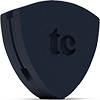
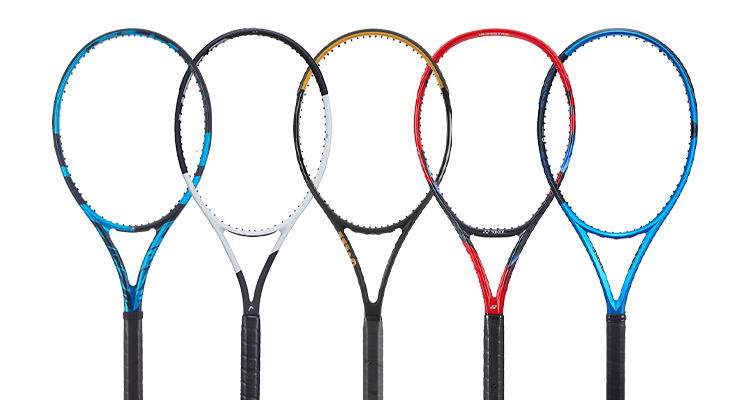

I am SO excited to get back into tennis! I recently had a baby…. and have not played tennis competitively since high school. I joined ALTA team for fall and am WAY overdue for an upgrade in Raquets. I have no clue where to start. My high school Racquet is the Wilson ProStaff Classic. I loved it in high school but now it is pretty heavy and I could probably use a bigger head size?
My game is top spin with an eastern grip. I do slice my forehand occasionally. I look forward to demo rackets. Do you have any suggestions on where to start with demos??
Hi Jamie,
That’s so awesome to hear! I stand behind all the racquets on this list, so hopefully, that provides you with some options worth checking out. Of those I recommend in this guide, I think the Babolat Pure Strike and Head Speed MP would be excellent options. The head sizes are bigger (and more forgiving) than your old Pro Staff, and they both deliver excellent well-rounded performance that generally appeals to a wide range of players.
If you’re looking to stay in the Wilson family, I’d also check out the Wilson Blade 100. It’s another fantastic frame that I think you’d appreciate.
Best of luck with getting back into tennis!!
All the best,
Jon
Good article. Thanks for it. Helped me with a raquet for my beginner wife .
Hi Jose,
Thank you for sharing that it was helpful. That’s great to hear :)
Best of luck to your wife on her tennis journey!
All the best,
Jon